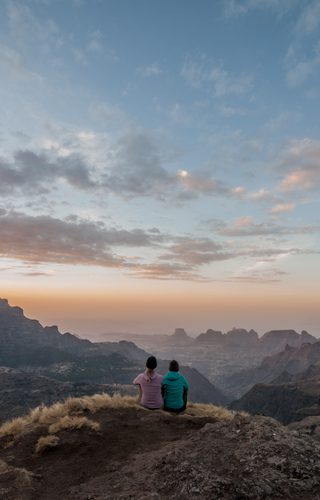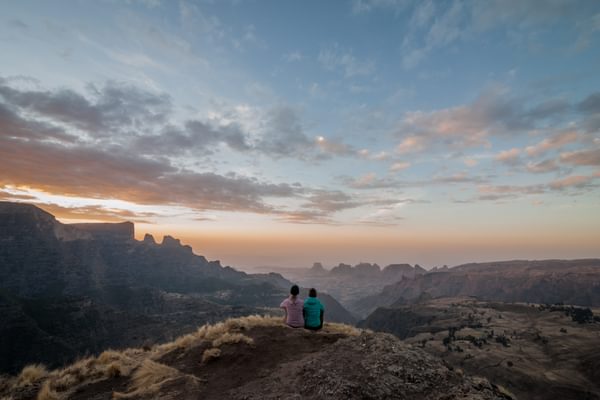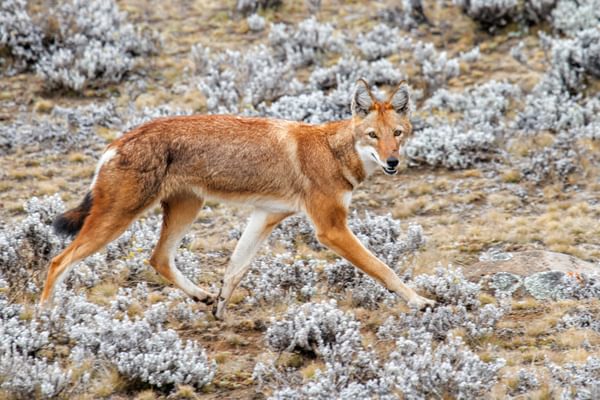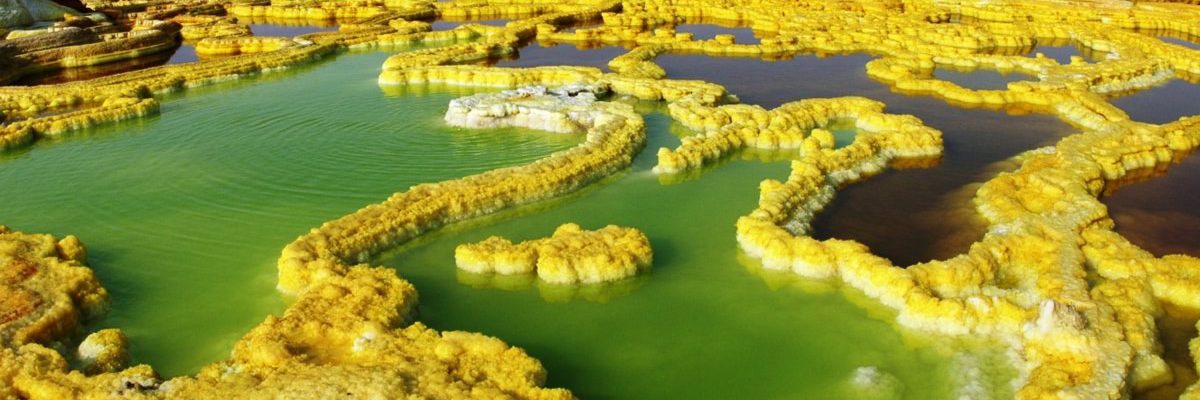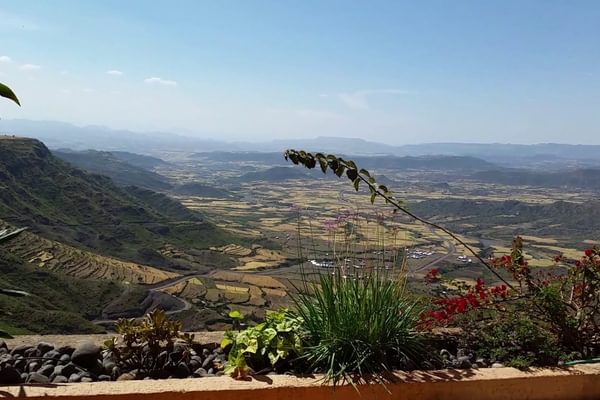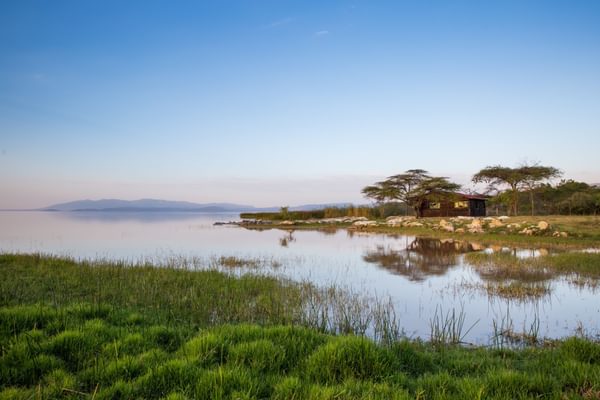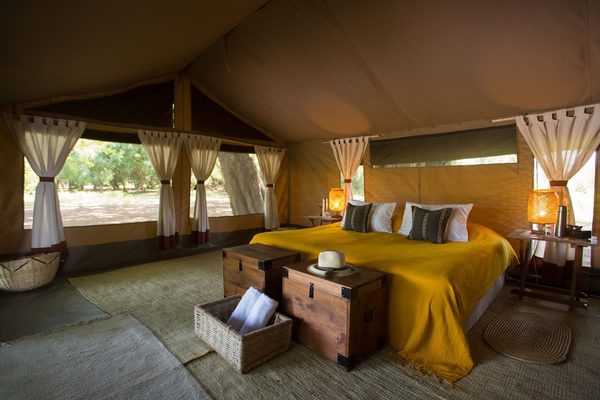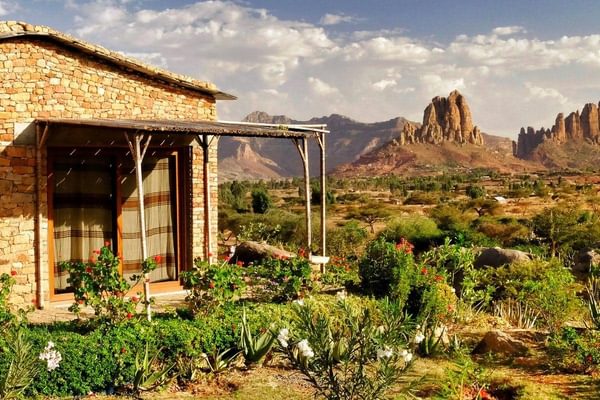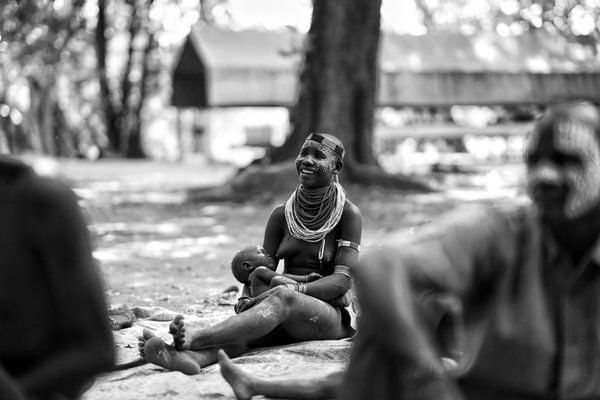Ethiopia is an outstanding country for hiking, culture and a warm welcome
Mind-blowing scenery, fascinating people and highly localised wildlife await visitors on a tailor-made Ethiopia holiday
Contrary to widely-held media-generated perceptions, much of Ethiopia is well-watered, verdant and fertile. The ruggedly beautiful ‘Roof of Africa’ has all the ingredients it takes to provide epic and transformative historical Ethiopia tours.
This land-locked north-eastern African country is best known for its northern ‘Historical Route’ in the mountainous regions of Tigray and Amhara. It’s here that you’ll see the awe-inspiring 12th century Christian rock churches, island monasteries, impressive pre-Christian monolithic stelae and unexpected 17th century castles. Intertwined in the rich history of these regions is a strong spiritual element, which visitors can witness in the form of some truly impressive, annual ceremonies.
For much of its history Ethiopia was ruled by the Solomonic dynasty, which originated in the 10th century after Menelik I was born to the Queen of Sheba and King Solomon of Israel. The dynasty was in power from 1270 until 1974, when Haile Selassie, a defining figure of Ethiopia’s history and of messianic significance to the Rastafari movement, was deposed.
Ethiopia has some of Africa’s most mind-blowing scenery, ranging from the vast Simien Mountains to the sweltering Danakil Depression, which, aside from being Africa’s lowest point, has a quarter of the continent’s active volcanoes. Several of the peaks in the mountainous highlands to the north (Simien Mountains) and to the south of the Ethiopian Rift Valley (Bale Zone in Oromia), exceed 4,000 metres in elevation. Adding to Ethiopia’s scenic highlights are its Rift Valley lakes and to the south of these, the Bale Mountains. To the north of the Rift Valley, near Bahir Dar (capital of the Amhara region), additional scenic highlights include the Blue Nile Falls; the Source of the Blue Nile, and Lake Tana.
While 75% of Ethiopia’s population are Oromo, Amhara, Somali and Tigrean, the country has around 80 ethnic groups. The extraordinary tribes of Southern Nations, Nationalities and People’s Region (Konso and South Omo) merit special mention as these small communities are about as far away from ‘Western civilisation’ as you can get in Africa.
With the extensive highlands mostly varying between 1,290 – 3,000 meters above sea level, Ethiopia is in some ways almost an ‘ecological island’, with its distinctive assemblage of endemic mammals (39 species) and birds (18 species). Icons include the critically endangered Simien wolf (there are less than 450 remaining) and the unmistakeable Gelada or ‘bleeding-heart’ monkey, the only primate which grazes. Birders will be in their element, with endemics such as Blue-winged goose and Streseman’s bush-crow often being spotted.
With such an abundance of rugged terrain, Ethiopia beckons hiking and trekking enthusiasts. Talk to us about fully equipped mule-trekking trips in the Simien and Bale Mountain National Parks, as well as community village walking holidays which incorporate well-managed home stays in the Tigray and Wollo regions. Whether you wish to take a private, bespoke tour or to join one of our set small group departures, most of which include attendance at significant cultural events, you will be taken care of by our excellent, professional guides and drivers. It is worth bearing in mind that while today there are some very comfortable lodges and hotels, the standard of accommodation in Ethiopia for the most part, does not yet match that in better-known Eastern African destinations such as Kenya and Tanzania.

Turkana And Omo Valley Adventure
- Nairobi
- Laikipia
- Turkana
- Omo Valley
Led by top guide, Steve Carey, this adventure takes you through the heart of North Kenya and into the Omo Valley in Ethiopia, allowing you to explore the cultures and incredible terrains through Turkana and onwards.
Ethiopia Holidays Trip Inspiration
When to go to Ethiopia
Find out the best time to visit Ethiopia with our month by month guide.
- Best
- Good
- Mixed
- Jan
- Feb
- Mar
- Apr
- May
- Jun
- Jul
- Aug
- Sep
- Oct
- Nov
- Dec
January
January in Ethiopia is all about Timket, an annual Christian festival being celebrated throughout the country. It's a spectacular sight to behold. Check out our Timket tour for more information. Temperatures are pleasant at this time of year so it's a great time for touring around much of the country.
February
February marks the end of winter in Ethiopia, so if you're travelling to the highlands pack a few extra layers as it can get cold at night.
March
Temperatures begin to rise in March, making trekking in the Simien Mountains and exploring Lalibela great options this month. There are occasional rain showers but nothing that will really disrupt activities. It's wet in the Omo Valley region between March and June, with muddy roads disrupting travel in this area.
April
April is the start of the short rains, which begin in the Omo Valley in southern Ethiopia.
May
The rains arrive in the Bale Mountains National Park and the Rift Valley Lakes during May and June, so this isn't a great time for hiking in these areas. However the downpours are usually in the afternoons, leaving the mornings with blue sunny skies, and plenty of opportunity to explore the rest of the country.
June
The rains continue, which make this a great time for the breeding season of migratory birds, with numerous colourful species to keep an eye out for.
July
The wettest months in the northern and central highlands are July and August. The short heavy storms mean this isn't a good time for hiking in the Simien and Bale Mountains, but the downpours don't really disrupt activities throughout the rest of the country. It's a good time to visit Lalibela which will be less crowded than during the rest of the year.
August
The wettest months in the northern and central highlands are July and August. The short heavy storms mean this isn't a good time for hiking in the Simien and Bale Mountains, but the downpours don't really disrupt activities throughout the rest of the country. It's a good time to visit Lalibela which will be less crowded than during the rest of the year.
September
Whilst the beginning of the month will see the tail end of the rainy season, it's actually quite a good month to travel around Ethiopia, just before peak season kicks in, and whilst the country is still green and beautiful. If you want to see the carpets of yellow Meskel flowers, or witness the colourful Meskel Festival, this is the month!
October
October is the start of the peak tourist season in Ethiopia, bringing with it great weather, pleasant temperatures, blue skies and little rainfall. A perfect time for touring around the country, particularly the Central Highlands and Northern Ethiopia.
November
The cooler temperatures and little rainfall during November and December make them great months for exploring the Omo Valley, with better road conditions and green landscapes.
December
The good weather and travelling conditions continue through December and into January, making this an ideal month to explore the whole country.
Things to do in Ethiopia
Explore our Different Types of Ethiopia Holiday
Where to go in Ethiopia
Best places to visit in Ethiopia
OUR FAVOURITE ETHIOPIA ACCOMMODATION
Best Places to Stay in Ethiopia
Inspiration from the blog
Traveller Tales and Insider Insights
Speak to an Ethiopia expert today.
Start planning your Ethiopia holiday.
Ben
 Plan with an expert
Plan with an expert
Have a look at our original holiday experiences and then contact us with your brief, or call 01768 603 715
 A tailor-made itinerary just for you
A tailor-made itinerary just for you
Our experts will send you a detailed holiday itinerary specified to your desires. It's our service promise to you.
 Value guarantee
Value guarantee
Tailor-made doesn't mean expensive! Ask about our price promise and book with financial security.
